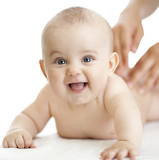Nightmares vs night terrors in preschoolers
|
Night waking in preschoolers is not uncommon and can sometimes be caused by nightmares or night terrors. But how do you know the difference between a nightmare and a night terror? Gaining an understanding of them both is key to determining the best way to handle them. We look at nightmares and night terrors in more detail and give you some tips on how to combat the possible underlying causes and help stop your preschooler’s episodes.
|
You might also be interested in ...
Why hire a sleep consultant?
It’s often difficult to know where to start if your baby or child is having sleep problems or you’re looking to create some healthy sleep habits. That’s where a baby and child sleep consultant comes in! The role of a professional sleep consultant is to teach your child the skills necessary to happily sleep through the night and to take long, restful naps during the day. Find out if hiring a sleep consultant might work for you and your little one.
Healthy spines & smarter brains
Find out how growing a healthy spine and a learning brain both need the same thing for your kids to develop and why movement is so important. Kids these days just don’t move as much as they used to. So, what can we do to support a healthy spine and a healthy brain?







But how do you know the difference between a nightmare and a night terror?
Gaining an understanding of them both is key to determining the best way to handle them.
We look at nightmares and night terrors in more detail and give you some tips on how to combat the possible underlying causes and help stop your preschooler’s episodes.
Nightmares vs night terrors in preschoolers
Understanding nightmares in preschoolers
Nightmares can be considered to be very bad dreams. They are a normal part of your preschooler’s development and occur during Rapid Eye Movement (REM) sleep, which happens towards the end of their sleep period.
Having nightmares often peaks around 2 to 3 years of age when children have rich imaginations and trouble distinguishing between reality and fantasy.
When your preschooler has had a nightmare, they will wake up and be able to recall the details. They will also be able recognise you and want you to stay and comfort them until they fall back to sleep and the scary thoughts have gone.
Nightmares can be caused by something scary your preschooler has seen or heard, and are also common after difficult events that have occurred in their life or when they are re-living a trauma.
Understanding night terrors in preschoolers
Night terrors, also known as sleep terrors, are classed as parasomnias (an undesired occurrence during sleep).
Night terrors usually occur in the first half of the night and during deep sleep.
Unlike nightmares when your preschooler wakes up and remembers the details, when they have a night terror episode they will remain asleep.
Night terrors are not bad dreams. Because they do not occur during REM/dream sleep (where your body undergoes partial paralysis), a preschooler experiencing a night terror is often more physical. They may sit up and scream, whimper, thrash around, appear anxious and try to get away from ‘something’. They may even try to follow you out of the room or try to run away from you.
Your preschooler is unlikely to recognize you when you approach them and are often inconsolable. Trying to hug or comfort them can often make the episode worse. They may also be sweating and/or have a racing heartbeat. These night terror episodes often last between 5-20 minutes and are often more upsetting for you as a parent than they are for your little one, as children do not usually remember them.
The most common cause of night terrors is sleep deprivation or extreme tiredness, or a disturbance in your preschooler’s sleep patterns—like travelling to different time zones, moving to a new home, disruption to their routines or a later bedtime. However, extreme physical activity and/or stress on their body like illness or fever can also trigger an episode, as can sleep apnoea or restless leg syndrome.
Interestingly your preschooler is more likely to have night terrors if a parent or relative also experienced night terrors or sleep walking as a child.
How to combat nightmares & night terrors in preschoolers
As night terrors and nightmares differ, so does their treatment. Once you understand the difference between these phenomena and once you know what you’re dealing with, you’ll be able to help your child more effectively.
Here are some simple tips you can try to help reduce the number of nightmares your preschooler is having:
If on the other hand you’re concerned that your preschooler is experiencing night terrors, the most important thing is to do is to ensure that they are getting enough sleep.
Other tips to help manage night terrors include:
Check out our Quick Guide to Nightmares & Night Terrors in Preschoolers and the 10 most common differences to look out for.
Source: This article was written by Kim Corley, a certified sleep sense consultant at Cherished Sleep.
Image source: babywise